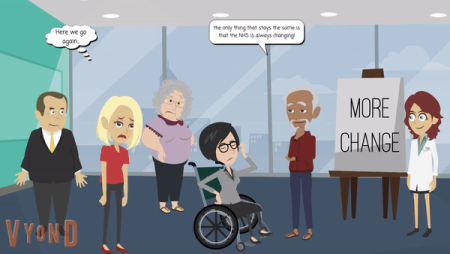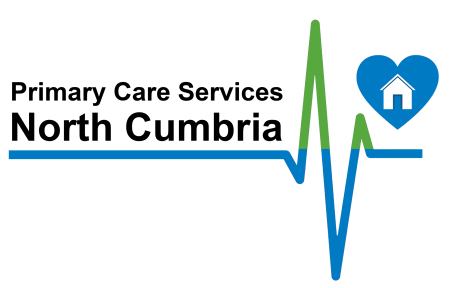Co-production is all about ensuring many viewpoints are able to help shape change to ensure it is the best it can be for as many of the people involved in working in or using a particular service. It is about ensuring a range of voices and ideas can work together, all can be heard and that can be reflected in the development that eventually takes place.
For us in North Cumbria that has happened in areas where we know a decision has been made and we have worked collaboratively to develop the best outcome. For example inpatient beds closing at three cottage hospitals. However the community has been able to challenge the assumptions of the NHS and help ensure alternative community services have been developed. This only happened because of a commitment from all to coproduce the change.
Change is difficult – it requires resilience, determination and persistence from all involved.

Managing change
"The only thing that stays the same is that the NHS is always changing."


Service design, implementation, employee voice, service user voice and clear communications are all important elements of a change process.
Change, even good change can be stressful as it forces people to step out of their comfort zone and embrace or at least accept something new. Adapting to and accepting change can take time.
It’s easy to think that people resist change out of awkwardness or lack of vision. However, the change might affect them in a way that you might not have foreseen.
Imposed changes can lead to greater resistance.
Some tips on the following tabs will help to engage people during times of change.


… on the level of involvement and the impact people may have – what can people involved really influence?
Have a clear structure...
... that will support people to work effectively and sustain their interest
Involve participants...
… in the setting of the agenda
Allow participants...
… the freedom to question the way services are delivered
Give service providers...
… the chance to explain what is out of their hands – regulation, finances
Consider ways...
… to strengthen relationships between professionals from different organisations and service users
Focus on shared learning...
… and building the capacity of individual service users/groups through peer support and mentoring
Facilitate...
… networking, information sharing and communication
Use a range...
... of methods to communicate and share information
Briefing
'This is what I've done'
Engaging
'This is what I've done/want to do, what do you think?'
Consultation
'What are the options & which one do you think we should take?'
Joint Problem Solving
'Let's get together to discuss the problem and see if we can agree what we ought to do?'
Negotiation
'Can we reach a deal on what to do?'
Empowerment
'This is the problem - you decide what to do'
3 pitfalls – if you are aware of some of the challenges you can think about how to avoid them!
Beware the politics
Competing agendas create politics (with a small p) during change
Those guiding others in the change process need to focus on managing egos, reducing uncertainty and working out how to satisfy the agendas that are a priority and making sure that people are heard, while understanding that everyone’s problems will not be solved.
Develop understanding
Balance facts with emotions – tell the story and the impacts you want to achieve alongside the data. If the change is creating concerns, ask ‘what evidence is there to support this?’
Gather evidence, stories, and data to show the changes required and why and so that better decisions can be made.
Be clear and honest with your language
Take a positive approach, but if there is negativity surrounding a change, acknowledge it and don’t deny it.
In a meeting have a timed discussion of the negative aspects to get them out in the open, before moving on to positive actions (knowing that the negativity will not go away at this point but that it is not being ignored)


